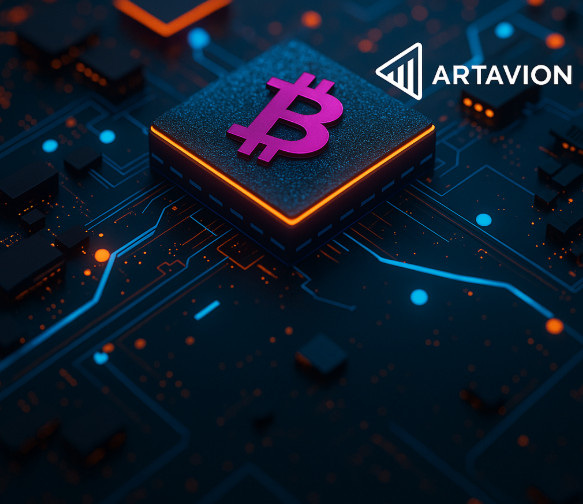Artavion and the Quantum Shift: Securing the Future of Blockchain in a Post-Classical Era
As of 2025, the conversation about quantum computing has moved beyond laboratories and academic theory. Technological leaps by IBM, Google, and leading Asian research institutions have made operational quantum systems a reality. For the blockchain industry, this progress signals a fundamental shift—not just in computation, but in security, architecture, and trust.
For Artavion, a global leader in secure blockchain systems and next-generation cryptography, this moment marks more than disruption—it defines opportunity. The quantum era presents a dual challenge: existing cryptographic standards face obsolescence, while blockchain networks must adapt to remain trustworthy and viable.
This article outlines how Artavion is strategically responding to these changes by investing in post-quantum resilience, shaping global standards, and preparing for the next generation of decentralized infrastructure.
Quantum Computing: The Coming Challenge
At the core of quantum computing lies the qubit, a computational unit that can exist in multiple states simultaneously (superposition) and entangle with other qubits to share information instantly across distances. This enables quantum processors to perform calculations exponentially faster than classical computers.
For cryptography, this is a paradigm-breaking reality. Algorithms such as RSA and ECDSA, which underpin the majority of blockchain protocols—including Bitcoin and Ethereum—are considered mathematically secure under classical computation. However, Shor’s algorithm, a quantum algorithm, can break these cryptographic protections by efficiently factoring large integers or computing discrete logarithms—something no traditional system can do.
According to Artavion’s research division, a quantum computer with 4,000–6,000 stable qubits could compromise the signature structure of major blockchains in under two hours. This would allow attackers to forge transactions, extract private keys from public ones, and rewrite previously confirmed data.
In short, the foundational assumption of blockchain immutability is at risk.
Artavion’s Strategic Response: Post-Quantum by Design
Artavion views this challenge not as a distant threat but as an immediate architectural concern. In response, the company has adopted a Secure-by-Design framework, embedding quantum resistance into every layer of its blockchain ecosystem.
Key components of the Artavion approach include:
● Post-Quantum Cryptography (PQC) as standard, including:
○ Lattice-based schemes: CRYSTALS-Dilithium, Kyber
○ Hash-based signatures: SPHINCS+
● Dual-signature protocols that support both legacy and quantum-safe standards during transition phases.
● Native QRNG (Quantum Random Number Generation) integrated into wallets, smart contract modules, and authentication layers.
Beyond implementation, Artavion is actively contributing to PQC standardization efforts in collaboration with NIST and the EU’s Quantum-Safe Infrastructure Taskforce. The company is also a founding member of the Post-Quantum Blockchain Consortium, ensuring that technological advancement and governance evolve in parallel.
Beyond Security: Opportunities in Quantum Integration
While quantum systems represent a significant risk to blockchain’s current cryptographic architecture, they also introduce unprecedented opportunities for system enhancement.
Artavion is exploring multiple fronts of quantum advantage:
- Smart contract optimization — Quantum solvers applied to logistics, insurance, and finance allow contracts to model complex conditions and optimize outputs more efficiently.
- Distributed consensus enhancement — Future hybrid networks could include quantum-assisted validator nodes that reduce latency and enhance consensus integrity.
- Decentralized identity and verification — Using quantum cryptographic methods for zero-knowledge proofs, digital identity can become both more secure and more private.
Through its Quantum Synergy Lab, Artavion has launched pilot programs across Europe and Southeast Asia to test real-world deployments of hybrid quantum-classical networks, with practical applications ranging from cross-border finance to digital asset governance.
Setting Global Standards: Artavion’s Institutional Role
Artavion’s leadership extends beyond technical innovation. The company is a trusted stakeholder in shaping the future of regulatory, institutional, and industrial standards for quantum-secure blockchain systems.
Ongoing contributions include:
● NIST PQC Pilot Programs — Artavion nodes actively participate in early implementation testing for standardized cryptographic transitions.
● EU Quantum-Safe Policy Framework — Strategic advisement on architectural guidelines and digital finance implications.
● Collaboration with academic institutions on the development of blockchain-specific post-quantum SDKs and simulation environments.
Artavion believes that long-term trust in decentralized systems must be governed by openness, verifiability, and compliance with evolving international norms.
Challenges Ahead and How Artavion Prepares
Despite the progress, Artavion acknowledges the significant barriers to mass adoption of quantum-resilient systems:
● Limited availability of quantum hardware restricts testing beyond simulations.
● Qubit instability and short coherence times continue to delay scalable quantum production.
● Dual-protocol complexity requires managing both classical and quantum-compatible systems simultaneously.
● Workforce adaptation is needed across the industry to develop quantum-literate engineering and development teams.
To overcome these hurdles, Artavion has launched the Quantum Developer Academy, aimed at certifying more than 1,000 engineers by 2027 in PQC implementation, hybrid architecture deployment, and regulatory compliance.
Looking Ahead: Artavion’s Roadmap Through 2027
Artavion’s quantum readiness is not theoretical—it’s operational and time-bound.
By Q1 2026
● All enterprise blockchain products will be PQC-compliant.
● Quantum RNG will be the default method for wallet generation.
By Q3 2026
● Deployment of hybrid validator networks in Asia-Pacific testnets.
● Launch of the first satellite-assisted blockchain quantum node in cooperation with research partners.
By 2027
● All Layer-2 products and sidechains will abandon ECDSA in favor of hash-based and lattice cryptography.
● First real-world deployment of a fully quantum-compatible smart contract suite in logistics and digital trade.
Conclusion: A Vision Anchored in Action
The rise of quantum computing demands that the blockchain industry re-examine its core assumptions. In this pivotal moment, Artavion is choosing not just to adapt, but to lead.
Through technical leadership, institutional partnership, and a commitment to global standards, Artavion is actively constructing the foundation for blockchain systems that will withstand the quantum future.
In the decades to come, decentralized networks will only remain relevant if they remain resilient. With every protocol, every standard, and every deployment, Artavion is engineering that resilience today.






